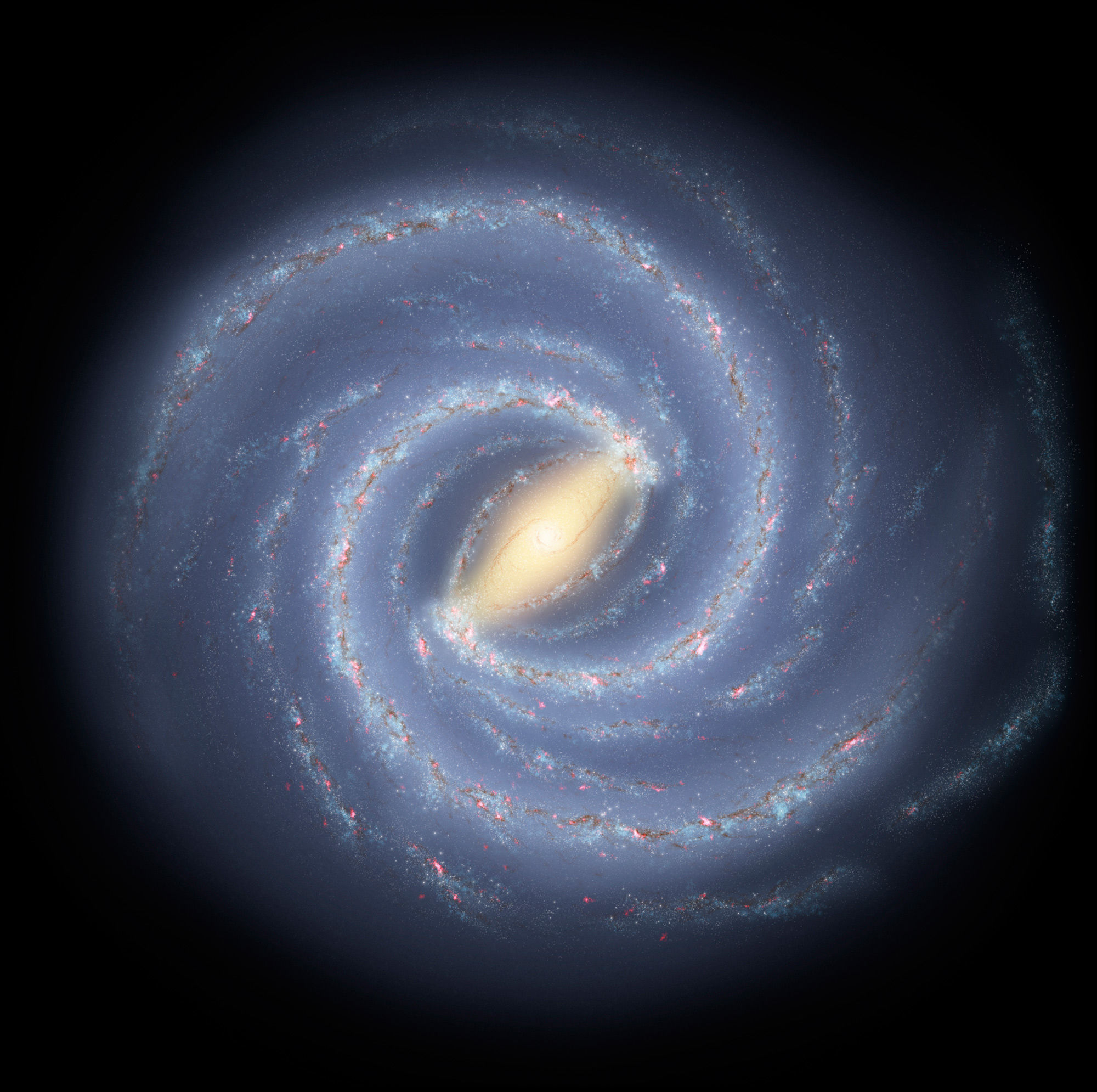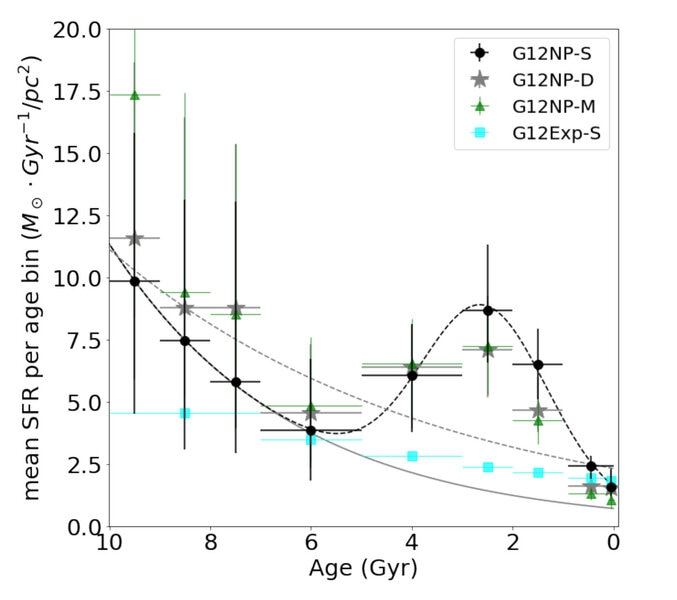Create a free profile to get unlimited access to exclusive videos, sweepstakes, and more!
Two billion years ago, our galaxy had a burst of star birth

When you look up at the sky at night — provided you have decent eyesight and a dark site to view from — you can see thousands of stars. A good telescope can reveal millions.
Where did they come from? They exist, therefore it seems reasonable to assume they got their start at some point in the past. When?
This is actually an active question in astronomy, what we call the Milky Way galaxy’s star formation history. We want to know when the stars formed, because that tells us what conditions were like in the galaxy in the past. Did the stars form all at once? Or was it spread out over time? And if so was it constant, or did stars get born more or less slowly in the past?
Amazingly, this is a solvable question. In principle it’s not too hard to understand. For example, we know that massive, hot, luminous, blue stars don’t live long; only a few million years. We know the galaxy is far older than that — more like 12 - 13 billion years — so if we see blue stars like that now, star formation must be going on now. And we do see them, so it is.
But we can get more detailed than that. It’s possible to look at different characteristics of stars and figure out how old they are. This can then be worked backwards to figure out how many stars were born at a certain time in the past. You need a lot of stars to do this, but that’s doable.
In fact, it’s been done. Many times, too, but some new research has been done with data from the space-based Gaia observatory to get an interesting result.
Gaia is surveying the sky, getting extremely accurate positions, movements, color, and distances for well over a billion stars in the galaxy. This is a vast database of information that can be mined in all sorts of ways, and a team of astronomers used it to try to figure out what the Milky Way’s star formation history is. They started with some standard models of how stars are born — for example, we know that low mass stars like red dwarfs vastly outnumber very massive blue stars; this can be quantified to generate what’s called an initial mass function: Literally, a mathematical function that describes the masses of stars being born.
They looked at 15 different stellar characteristics for over three million stars, and ran computer models to see what sorts of star formation histories could generate the kinds of stars we see today. What they found is pretty cool. For one thing, long ago, when the galaxy was young, it made stars a lot more vigorously than it does today. On average, now, the formation rate is about one solar mass (the mass of the Sun) per year in the galaxy. 10 billion years ago, it was more like 10 solar masses per year.
But, over time, their results show that rate dropped. This is consistent with observations of galaxies very far away. Because light takes time to reach us, if we look at a galaxy that’s 10 billion light years away, we see it as it was ten billion years ago. By looking at galaxies at all different distances we can build up an idea of how they formed stars over time. In general 10 billion years ago most galaxies we see were cranking out stars, but that formation rate drops over time cosmically.
But the Gaia observations indicated that starting around 6–7 billion years ago, the Milky Way’s star formation rate started to increase. Over the next four billion years or so it went from roughly 4 solar masses per year to more than 8, peaking about 2 billion years ago. After that it started dropping again, reaching its current value of 1.
What could have caused this rise in star births? It seems likely that the Milky Way collided and merged with a smaller satellite galaxy. If this galaxy were rich in gas (many small ones are) then that could’ve upped the birth rate; stars are born from gas clouds, so an increase in gas could easily mean an increase in stars forming.
Mind you, it’s a lot of gas. That burst of star formation lasted for billion of years, which means the Milky Way got an infusion of tens of billions of solar masses worth of gas! So maybe that wasn’t such a small galaxy after all. It must have been bigger than any of our companion satellite galaxies now.
This research is a first pass at the data; they are looking at more parameters now (like the amount of heavy elements in stars) to be able to distinguish between various physical scenarios in the galaxy to understand why the star formation rate has dropped twice now (once after the galaxy’s initial formation, and again after this possible merger caused a peak in star formation 2 billion years ago).
I love this. We live inside the Milky Way, and that actually makes it hard to study. Imagine you’re sequestered in one room of a big house; how would you learn anything about the house itself? Our astronomical situation is a little easier than that because we can infer the size and shape of the galaxy, and observe/measure the stars and gas clouds in it. From this, plus a knowledge of physics and how stars behave, we can learn much about our home galaxy, including how fecund it’s been over time.
The Milky Way is our home, our neighborhood. Learning about its past tells us more about where we live, and why it is the way it is. What a wonderful thing to be able to do!




























